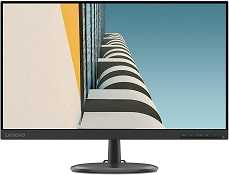What is overdrive in a monitor?
Overdrive” refers to a feature designed to reduce motion blur and improve pixel response time. When pixels change from one color to another, they need to transition quickly to avoid blurry or ghosting effects, especially in fast-paced content like video games or action movies.
Overdrive technology, also known as response time compensation (RTC), involves driving the pixels to change their states more rapidly. It works by temporarily increasing the voltage applied to the liquid crystals in an LCD (liquid crystal display) monitor, causing them to respond faster and transition between colors more quickly. This reduces the perceived motion blur and enhances the overall sharpness of the image.
However, excessive overdrive can lead to artifacts such as inverse ghosting or color overshoot.
To address these potential issues, monitors with overdrive typically offer different levels or settings, allowing users to adjust the intensity of the overdrive effect. The optimal setting depends on the specific monitor model, so it’s recommended to consult the manufacturer’s instructions or experiment with the settings to find the right balance between reducing motion blur and minimizing artifacts.
It’s worth noting that overdrive technology is primarily found in LCD monitors, as they use liquid crystals to control the display. Other display technologies like OLED (organic light-emitting diodes) do not require overdrive because they have faster pixel response times inherently.
How to turn overdrive on and off?
The process of enabling or disabling the overdrive feature on a monitor can vary depending on the specific model and manufacturer. However, here are some general steps that can help you locate and adjust the overdrive setting:
On-Screen Display (OSD) Menu: Most monitors have an OSD menu accessible through physical buttons located on the monitor’s bezel. Press the appropriate button to bring up the OSD menu.
Navigate to Picture/Display Settings: Within the OSD menu, look for options related to picture or display settings. The exact naming may vary, but common labels include “Picture,” “Display,” “Image,” or similar terms.
Find Overdrive/Response Time: Within the picture/display settings, search for an option specifically related to overdrive or response time. It may be labeled as “Overdrive,” “Response Time,” “Pixel Response,” or something similar.
Adjust the Setting: Once you’ve located the overdrive or response time option, you can typically adjust it using the navigation buttons on the monitor. The available options may include different levels or modes, such as “Off,” “Normal,” “High,” or numeric values representing the intensity. Select the desired setting based on your preferences.
Save and Exit: After selecting the desired overdrive setting, navigate through the OSD menu to find the option to save and exit. This will apply the changes you made to the monitor’s settings.
It’s important to consult the user manual or documentation specific to your monitor model for precise instructions, as the steps mentioned above are general guidelines. Additionally, the availability and naming of the overdrive feature may vary from monitor to monitor, so familiarizing yourself with the manufacturer’s instructions will ensure accurate information for your particular device.
Final words
Overdrive is a feature found in LCD monitors that aims to reduce motion blur and enhance pixel response time. By temporarily increasing the voltage applied to the liquid crystals, overdrive enables faster color transitions, resulting in a sharper and more fluid image. However, it’s important to note that excessive overdrive can introduce artifacts like inverse ghosting and color overshoot. Therefore, it is advisable to consult the manufacturer’s instructions and experiment with the available settings to find the optimal balance between reducing motion blur and minimizing artifacts for your specific monitor model.

